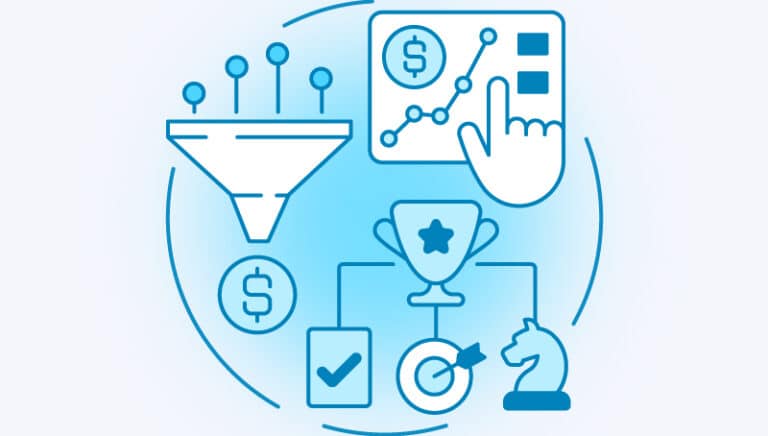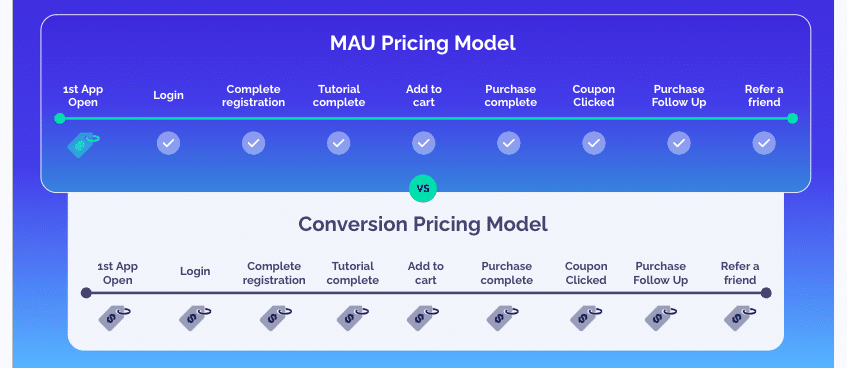Install attribution gets a lot of love from marketers and attribution providers alike, and understandably so: Spending on app install advertising grew by 15.5% in 2023, outpacing overall digital ad spending. Marketers rely on attribution data to discern exactly which of their precious dollars convert to app downloads. It provides the foundation to understand campaign effectiveness, determine marketing channel mix, and optimize budget allocation. Though the spotlight typically shines on user acquisition, the role of attribution data extends far beyond installation.
The pitfall of focusing only on install attribution
A sole focus on install data neglects critical insights about post-install user behavior and engagement — both critical for sustained app success and profitability. Traditional mobile measurement partners (MMPs) often reinforce this mindset with install-centric or conversion pricing structures that prioritize high-volume user acquisition without necessarily considering long-term engagement and retention.
Yet, what happens after install is more important. Despite sophisticated, multi-channel acquisition strategies, many apps face staggering churn rates, losing 77% of their daily active users (DAUs) within the first three days after install.
To keep users engaged, marketers need comprehensive, data-driven approaches — and the same level of granularity that guides their acquisition efforts. Post-install attribution data is key to inform engagement strategies, as well as other activities designed to maximize user lifetime value (LTV) and drive sustained revenue growth.
Reengage users to grow revenue
With the majority of apps free to download, profitability depends on an app’s ability to engage and retain its users. But all apps risk being forgotten unless marketers continuously remind users they exist through relevant alerts, notifications, and incentives to return. Nurturing app users is a lifecycle-long commitment.
Reengagement campaigns target inactive app users who have installed but ceased to use the app, aiming to reignite their interest and encourage app usage again. The benefits of reengagement are significant: It reduces customer acquisition costs (CAC), increases app usage and engagement rates, improves user retention, and boosts revenue generation by reactivating dormant users. By extending the lifetime value of users, reengagement efforts can lead to sustained growth and increased referrals. However, getting reengagement right requires precise tracking of performance and outcomes.
Refine your strategy with attribution insights
Using data to inform reengagement strategies sounds like a no-brainer, but there are countless obstacles to accurately attribute post-install activities. Cross-platform tracking complexities, data fragmentation across systems, and issues related to ad blockers, privacy regulations, and attribution fraud make measurement nearly impossible without a dedicated partner to provide technical and consultative support.
Attribution and measurement partners like Branch do the hard work for you by tracking the sources that drive users back to the app across platforms, devices, and channels. This means marketers can associate in-app events, such as app opens, purchases, or feature engagements with specific marketing touchpoints and, in turn, gain a deeper understanding of campaign effectiveness and user behavior.
Reach the right audiences
Marketers maximize return on ad spend (ROAS) and improve campaign performance when they deliver the right messages to the right users. Audience building leverages user data to construct custom audiences based on various criteria, such as past purchases, in-app behavior, ad exposure, and app and web interactions that can then be used in reengagement campaigns.
For instance, a retail app might launch an email reengagement campaign to users who meet the following criteria:
- Users abandoned an item in their cart.
- Users have engaged with the app at most once within a seven-day period.
Audience segmentation ensures that users receive personalized messages tailored to their unique context, which helps drive incremental revenue and win back inactive users. For example, “Hey [User Name], we noticed you left [Product Name] in your cart! It’s still waiting for you. Complete your purchase now and receive a complimentary tote bag. Happy shopping!” will convert better than a generic reengagement prompt.
Branch Audience Builder lets you build rules-based engagement groups to use in targeted campaigns.
Optimize campaigns and increase conversions
With the help of post-install attribution data, marketers can also decipher which channels or campaigns drive specific conversions and optimize their efforts accordingly. For example, suppose a travel company runs a retention campaign across multiple channels, including email, push notifications, and social media. Through attribution data analysis, the team discovers a compelling insight: Users who engage with push notifications are more likely to make hotel bookings within the app compared to those reached through email or social media. The team may then choose to allocate more resources toward push notification campaigns or refine their strategy even further with A/B tests to fine-tune copy and CTAs. This test-and-iterate approach ensures marketers invest in the most effective methods of driving conversions and revenue.
Take Woolworths Supermarket, for example, an Australian grocery retailer and Branch customer that uses post-install attribution data to optimize its digital advertising strategy. Its analysis of Branch data revealed that users acquired through Google Ads eventually placed 65% more purchases compared to those from Apple Search Ads and Meta. This insight prompted the company to double down on its investment in Google Ads and implement an ongoing creative testing strategy. By targeting high-value, likely-to-convert users, Woolworths achieved a 69% surge in app purchases and a 39% increase in ROAS.
Get started
The journey of app attribution doesn’t end at the point of installation. To engage and retain app users, brands need visibility into the entire user journey — from install to engagement to conversion — across every touchpoint, channel, and device. By attributing each user event to a specific source (and not having to pay each time a user engages with your app through a campaign), marketers can analyze user paths and behaviors to identify opportunities for optimization and refinement.
Though cross-channel attribution is never easy, partnering with the right provider simplifies the process. Ready to elevate your attribution game? Request a demo with our team.


























